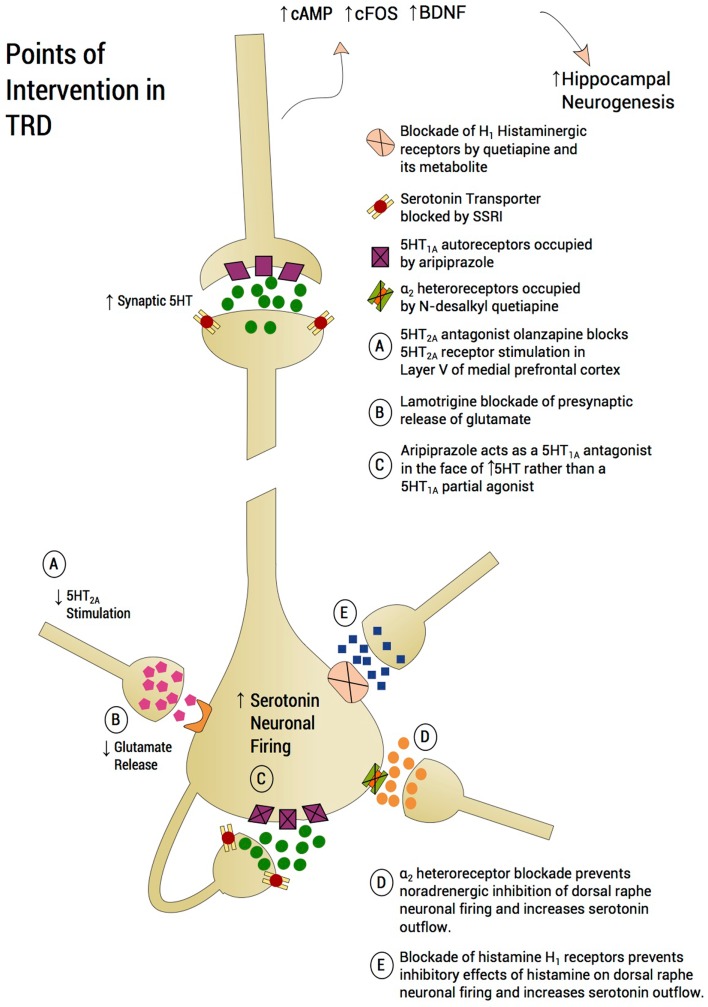Figure 4.
Points of intervention in TRD. A treatment approach on a plausible neurobiological model is proposed, which aims to prevent mPFC-induced serotonin shutting down the dorsal raphe. Utilizing an incremental approach, lamotrigine is recommended as a first step to curb glutamatergic inflow to the dorsal raphe. Aripiprazole will further reduce raphe glutamatergic input by blocking 5-HT2A receptors in the medial prefrontal cortex and protecting 5-HT1A autoreceptors from serotonin auto-inhibition through partial 5-HT1A agonism. Quetiapine’s metabolite, N-desalkyl quetiapine, acts as an antagonist at α2-heteroreceptors, thus protecting the raphe neurons from shutdown by norepinephrine overdrive. Finally, drugs like quetiapine also possess potent antihistaminergic effects for histamine H1 receptors. Histamine through H1 may reduce serotonin firing. Based on the view that each neurotransmitter system mentioned – glutamate, serotonin, noradrenaline, and histamine – are activated by stress and exert a partial inhibitory effect on serotonin outflow, monotherapy may well be inadequate. Rather, a “stacking” approach to pharmacotherapy is proposed and creating a formal database using this method is worthy of pursuing.

